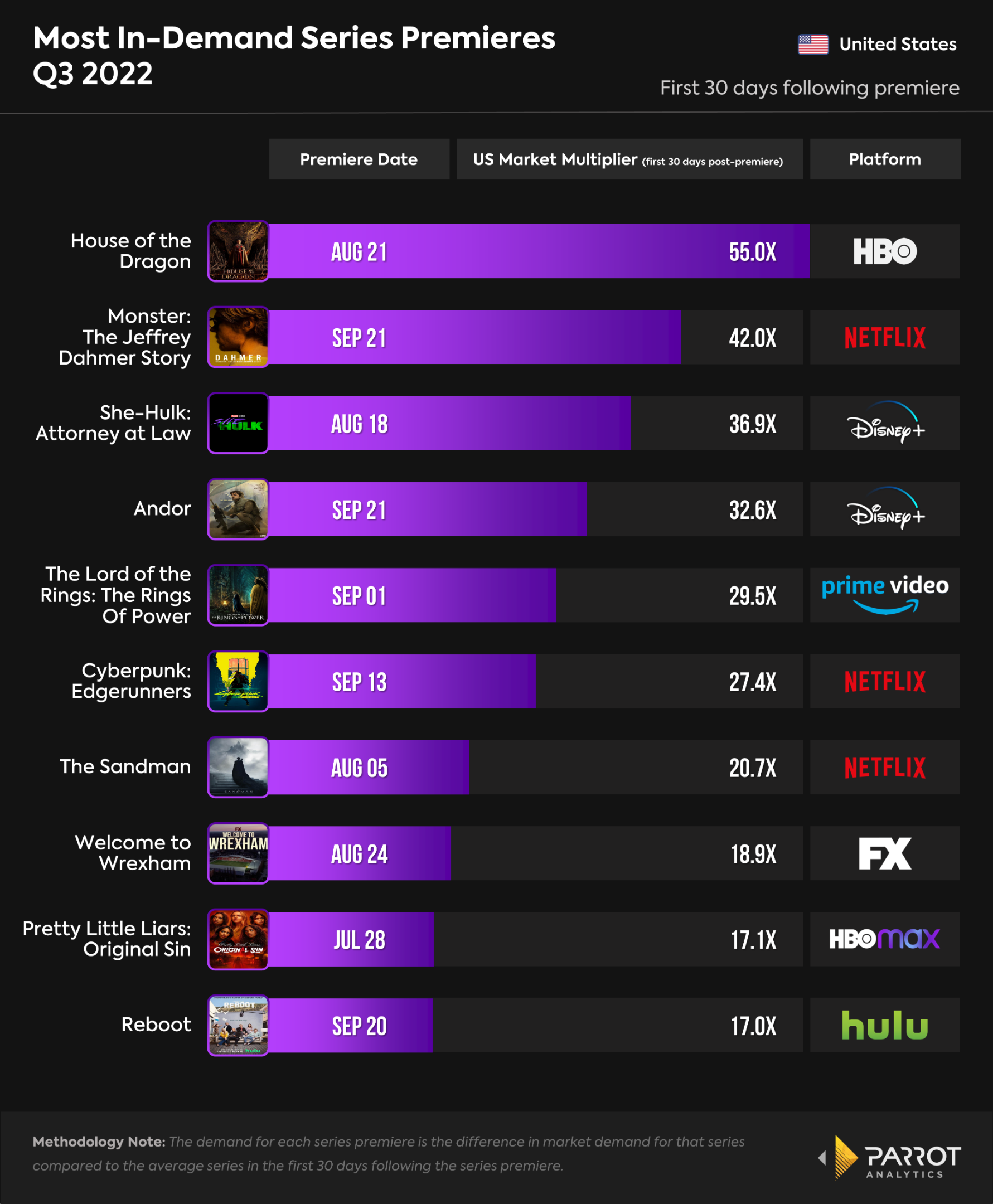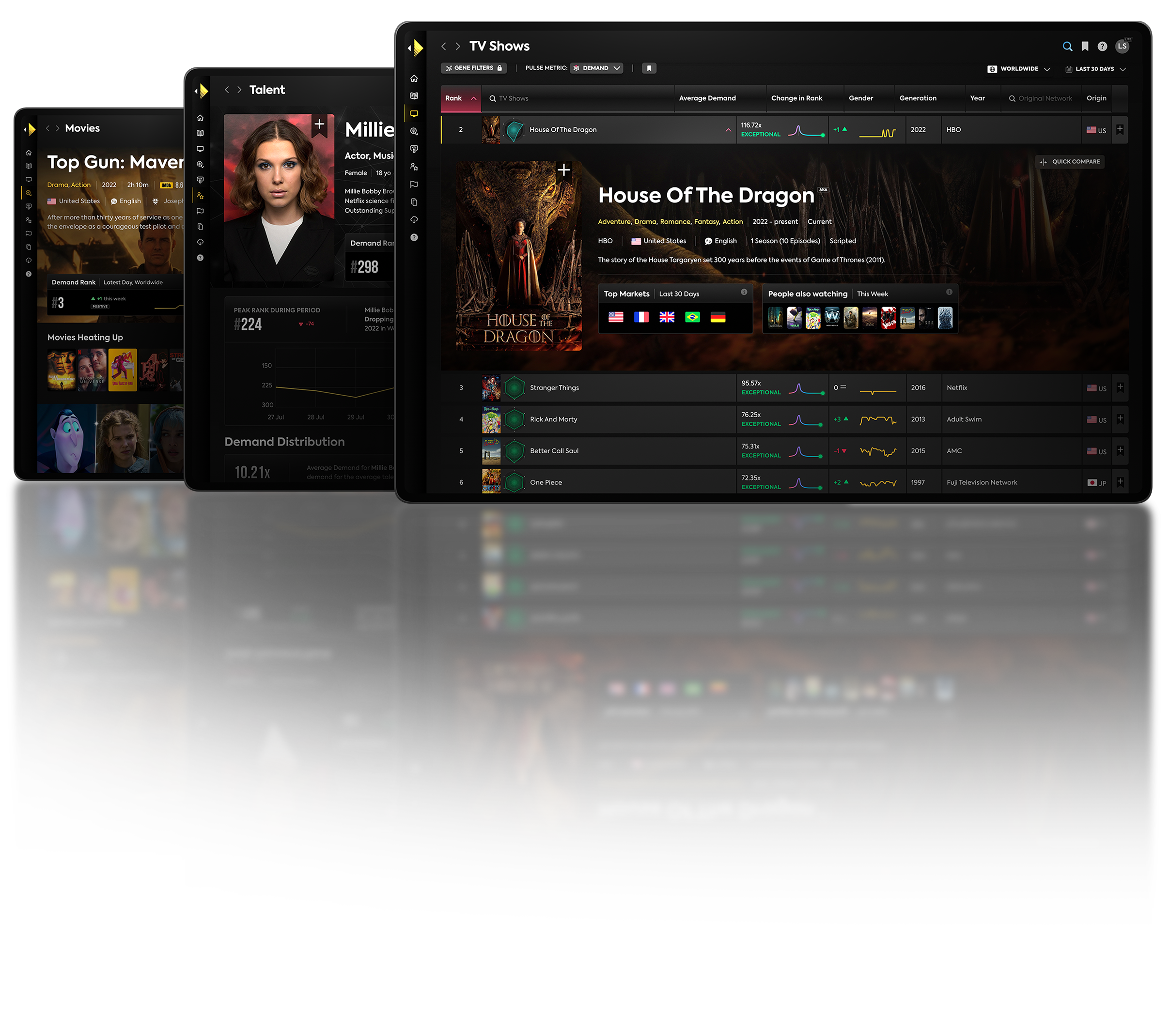This past quarter was a busy time for major new shows being released. The much hyped showdown between House of the Dragon and The Lord of Rings: The Rings of Power dominated media attention for a sizable chunk of the quarter. Despite stiff competition from these two conversation-dominating shows, a number of new series still managed to break through and capture audience attention in their first 30 days.

The new series which resonated most with American audiences was, unsurprisingly, HBO’s House of the Dragon, which averaged 55 times the demand of the average show in its first 30 days. The resounding success of this show is an important indicator for HBO that the Game of Thrones franchise can be successfully extended beyond the original series - a good thing given that multiple new series in the franchise are in development.
The Lord of the Rings: The Rings of Power had 29.5 times the average series demand in its first 30 days and ranked as the fifth most in-demand new series premiere when considering its first month of demand. This puts it well behind the level of demand that House of the Dragon achieved in its first 30 days. However, this number does not capture the surge in demand for the show after its final episode when it peaked at 55.3x demand. If this level of demand is the starting point for future seasons of the show, The Rings of Power should be well positioned going forward. With 5 seasons planned, Amazon is taking a long term view of its investment in this show.
Monster: The Jeffrey Dahmer Story may have been the most surprisingly successful new series premiere. It ranked as the series with the second highest demand in its first month - 42.0x. Dramatized true crime has been having a moment this year and this show definitely fits into that trending category. Monster had significantly higher demand than other Netflix series from Ryan Murphy and may be the show that finally makes Netflix’s mega-deal with Murphy pay off. The show was renewed for a second and third season as an anthology format after its successful debut.
In addition to tapping into the true crime demand trend with Monster, Netflix capitalized on two other types of trending content with Cyberpunk: Edgerunners - anime and shows based on video games. Cyberpunk: Edgerunners had 27.4 times the demand of the average series in its first 30 days. Even though Netflix released all episodes of the show on September 13th, demand for the show held up remarkably well for several weeks rather than quickly fading after a large spike in interest.
As it usually does, Disney+ had multiple originals among the most in-demand new series premieres of the quarter. Both its major franchises were represented in Q3 by She-Hulk: Attorney at Law and Andor which ranked as the third and fourth most in-demand premieres respectively. She-Hulk has been described as a workplace sitcom and is a departure from the format of other Marvel series that have been so successful for Disney+. High demand for the show is a positive sign that Marvel audiences are open to changing up the model. As a point of reference, She-Hulk had higher demand in its first 30 days than Moon Knight did.
Despite Rings of Power and House of the Dragon competing for audience attention, a number of the most in-demand new series this quarter were released while both shows were in the middle of their first season. Four of the ten most in-demand new series premiered in the last three weeks of September alone. This suggests that overlapping schedules with these two major shows did not cut into other new series’ demand enough to keep them from being a success. While the media narrative may have fixated on pitting these two shows against each other, audiences still had the bandwidth to give attention to other great series.



